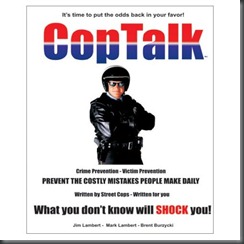On the Southwest Border
Understanding the Gang Threat – FBI
09/21/10
Mexican drug cartels run the billion-dollar trafficking operations that bring so much crime and violence to both sides of the Southwest border. But it’s street gangs that carry out the cartels’ dirty work of smuggling, extortion, and murder. Understanding the gangs—their structure, culture, and tactics—is the job of agents who specialize in collecting human intelligence, or HUMINT.
A Team Effort to Fight Drugs
Our El Paso HUMINT squad is co-located with personnel from the High Intensity Drug Trafficking Areas (HIDTA) program. Federal HIDTA funds help coordinate anti-drug efforts among local, state, and federal law enforcement and provide equipment, technology, and resources to fight drug trafficking. HIDTA is one of many federal programs aimed at combating the drug trade.
In our El Paso Field Office, the HUMINT squad pays particular attention to Barrio Azteca, the city’s predominant gang whose leaders regularly do business from prison—even authorizing contract killings.
“The focus of the HUMINT squad is not to worry about making individual cases,†said Special Agent Armando Ramos, a senior investigator on the team. “Our job is to see the big picture—whether it’s Barrio Azteca or any other gang—so we can effectively target these groups and the larger drug trafficking organizations they associate with.â€
Intelligence gathering is critical to seeing that big picture. And Agent Ramos, working closely with officers from the El Paso Police Department and the El Paso County Sheriff’s Office, collect intelligence in a variety of ways. They get tips from police officers on the street, recruit sources from the ranks of disgruntled gang members, and make contact with recently arrested gang members who may be looking for a more lenient sentence in exchange for their cooperation.

About This Series
FBI.gov recently visited the Southwest border region for a firsthand look at what the Bureau and its law enforcement partners are doing there to combat crime.
Part I: Border Crime | Gallery
Part II: Public Corruption
Part III: Violence Too Close to Home
Part IV: Forging Ties in Tijuana
Part V: A Drug Buy in El Paso
Part VI: Going After Major Players
Part VII: The Gang Threat
Part VIII: Importance of Intelligence
Graphic: Border By the Numbers
“Whatever intelligence we gain, we pass on to our Safe Streets Task Force and to other law enforcement agencies,†Agent Ramos said. “We get the information out quickly to where it can do the most good.â€
The actionable intelligence collected by the HUMINT squad could lead to arrests, drug seizures, or the prevention of crimes such as kidnapping or murder. There are dozens of different gangs operating along the Southwest border—some of them cooperate and some are bitter rivals—but the one thing they all share in common is violence.
Barrio Azteca—known as BA—is an extremely violent gang, with as many as 3,500 members on the street and in jail, both in El Paso and across the Rio Grande in Juarez, Mexico. Even though the Bureau put together a major racketeering case against the gang several years ago that effectively dismantled its leadership, the group has reorganized, and younger members—dubbed the “Pepsi Generationâ€â€”have been promoted to top positions.
Agent Ramos has been on the HUMINT squad for about three years and has an intimate knowledge of BA culture and its leaders. “The players are always changing, and so are their tactics,†he said. “That’s why HUMINT is so valuable, because we are able to keep pace with gang activities and be proactive in our response.â€
But the job requires constant vigilance, he explained, because of how integral crime and violence are to the gang’s culture. BA’s constitution—its “sacred bibleâ€â€”lists dozens of rules members must follow. Rule Number Two is, “Always dominate your opponent.†Rule Number One: “Once you get in, you can’t get out.â€
“After you become a member,†Agent Ramos said, “there are only two ways to get out of BA—get killed or get arrested. With that kind of mindset, you can see why the work of the HUMINT squad is so important.â€








